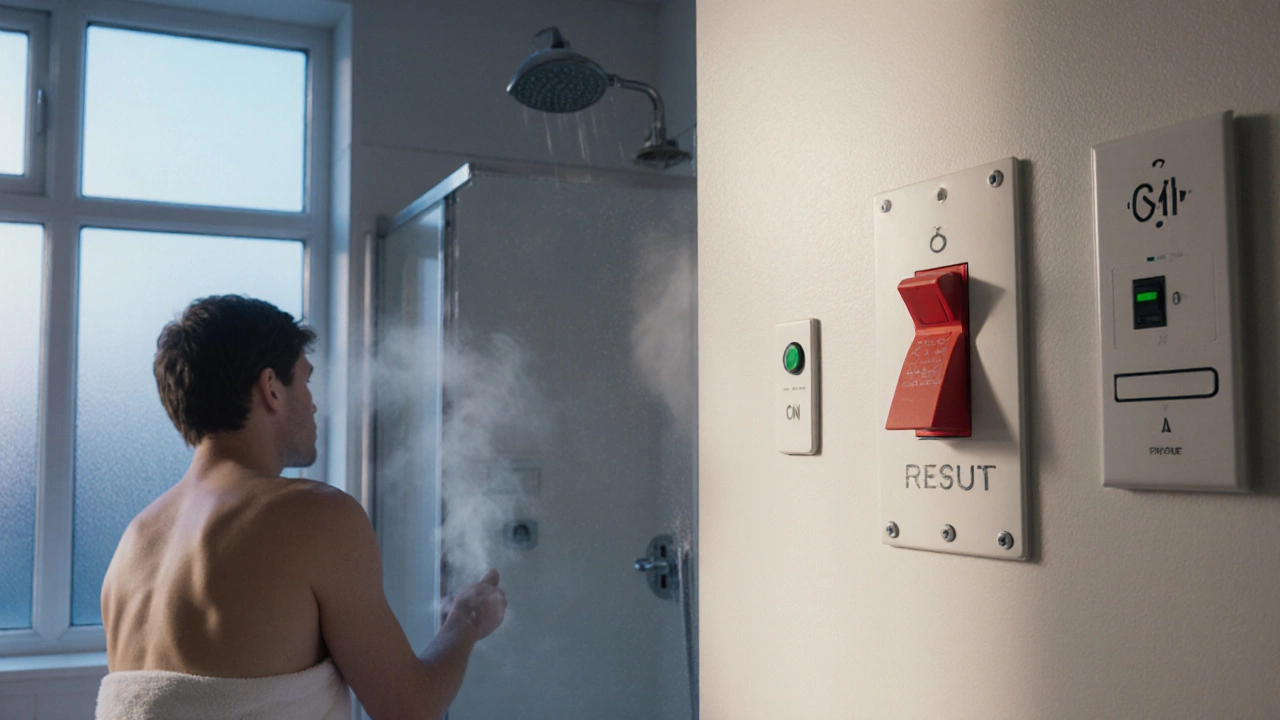A practical step‑by‑step guide to troubleshoot and fix a no‑hot‑water shower, covering power checks, thermostat, heating element, sediment, dip tube, mixing valve and when to call a pro.
No Hot Water Shower: Causes, Fixes & What to Do
When you're stuck with a no hot water shower, a situation where your shower delivers only cold water despite the heater being on, it feels like your whole morning is ruined. Also known as cold‑water shower, this problem can stem from a handful of common culprits that most homeowners encounter. One of the main players is the water heater, the appliance that heats and stores water for your taps and shower. A no hot water shower often points to a malfunction somewhere inside that system.
Common Reasons Behind a No Hot Water Shower
A water heater encompasses several components that can fail independently. The thermostat, the sensor that tells the heater when to stop heating may lose calibration, causing the heater to shut off early. The heating element, the electric coil that actually raises the water temperature can burn out, especially in hard‑water areas. If either of these parts stops working, the heater never reaches the set temperature, leaving your shower cold.
For homes that rely on a combi boiler, a unit that provides both central heating and instant hot water, the story changes a bit. A boiler’s internal heat‑exchanger can develop scale deposits, reducing its ability to transfer heat to the water flowing through the shower. In that case, the boiler is still firing, but the water never gets hot enough. This shows how a no hot water shower can be linked directly to the health of the boiler’s heat‑exchange system.
Gas‑fed heaters add another layer: the pilot light, the small flame that ignites the main burner may go out or fail to stay lit. When the pilot light isn’t burning, the main burner never ignites, and the water stays cold. A blocked gas valve or a faulty safety switch can cause the same symptom. So a cold shower can be the result of a simple flame that won’t stay lit.
Electrical issues are also common culprits. A tripped circuit breaker, a blown fuse, or a loose connection to the water heater’s power supply can cut off the electricity needed for heating. Even if the thermostat and element are perfect, no power means no heat. Checking the breaker panel before diving into the appliance can save time and avoid unnecessary disassembly.
Diagnosing the problem doesn’t require a toolbox full of parts. Start by confirming the thermostat setting is above the desired temperature; many users accidentally leave it at “low” or “off.” Next, feel the water exiting the heater. If it’s lukewarm, the heating element may be weak; if it’s room temperature, the heater likely isn’t firing at all. For boilers, listen for the usual “click‑click” of the pump and feel the pipe for warmth. A missing pilot flame is visible as an unlit burner tip. These quick checks give you a solid clue about which component to focus on.
When the DIY steps don’t bring back the heat, it’s time to call a professional. A qualified technician can test pressure‑switches, inspect gas lines, and replace faulty parts safely. Remember, working on gas appliances without proper certification is illegal and dangerous. Choose a service that is Gas Safe registered and familiar with local Nuneaton regulations. A pro can also flush the heater to remove sediment, a step many homeowners skip but which extends the life of the system.
Below you’ll find a curated list of articles that dive deeper into each of these areas. From detailed guides on thermostat troubleshooting to step‑by‑step boiler maintenance, the collection gives you the knowledge you need to get your shower back to a comfortable temperature quickly.

